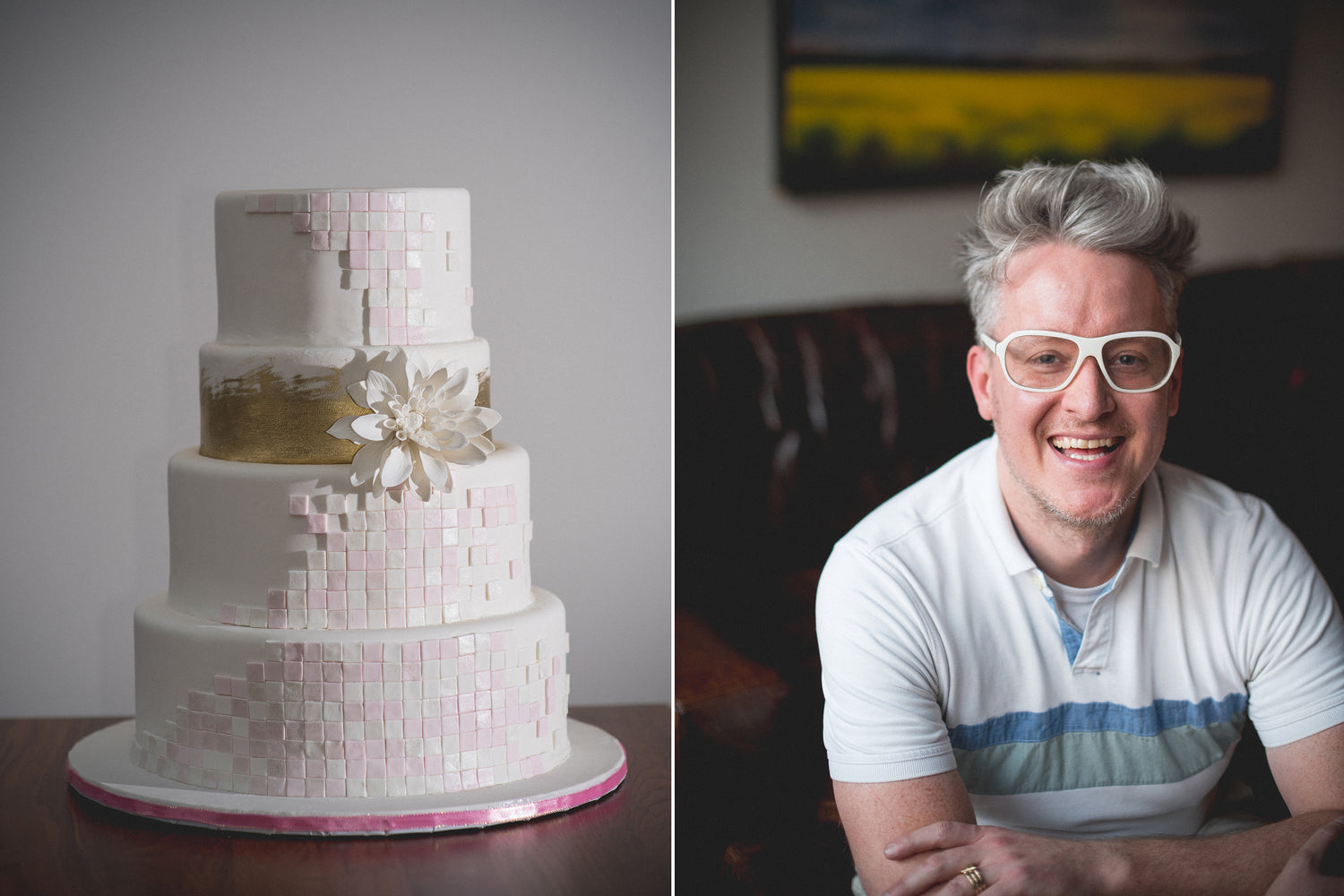
Brad Jarman and the Art of Design
March is a unique month for us in the Sugarworks Blog. Rather than reaching out to artists whose work we were familiar with, we held a contest for people interested in blogging. We were curious to see if anyone would respond who might be a little off our radar. And boy were we impressed with the submissions! It was so hard to choose that we ultimately went with 2 bloggers for this month, and we are super excited to introduce our 2nd March Artist- Brad Jarman!
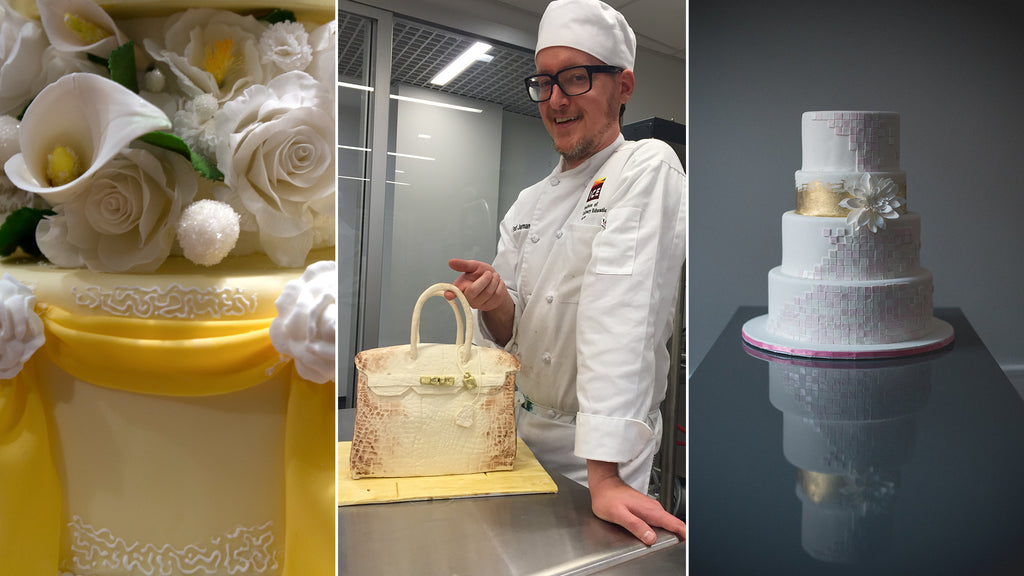
Brad is having a wonderful time exploring the world of cake, cookie and cupcake decorating. Several years ago he began this journey with the Techniques and Art of Professional Cake Decorating program at the Institute for Culinary Education, where he had the incredible good fortune to study cake design under the legendary Toba Garrett. He is currently enrolled in the school's Introduction to Pastry and Baking course and is having a fabulous time playing with food and continuing to learn about the cake and baking arts.
Brad comes to the world of sugar from a decade of practice as an attorney. Being a lawyer is fun in its own way, but it is definitely not as sweet! Today, Brad is going to teach us how thoughtful design is as important as well-developed skill.
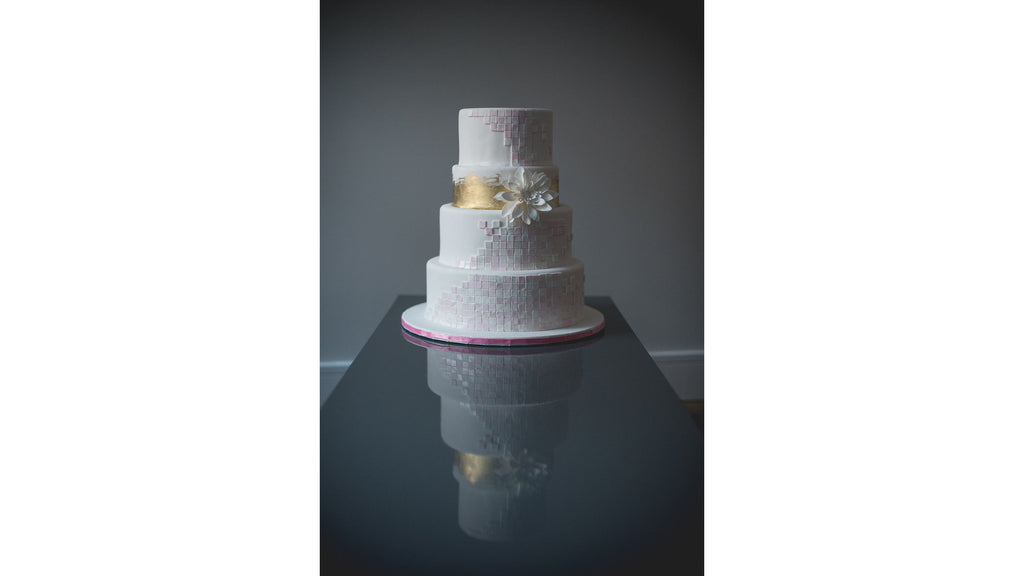
I want to talk a bit about cake design. I come to cake decorating after a decade spent practicing as an attorney - transitioning from that structured, organized setting into cake decorating, a craft of creation and creativity, was a stretch for me in many ways. In particular, I discovered that coming up with a workable cake design is not as easy as it seems! I still recall a cake I designed several years ago. In my mind it would be a towering celebration of my skills. A show-stopping extravaganza. An extravagant statement piece.
I wish I could tell you that’s how this story ended. In reality, when all was said and done? Child, it was a mess.
Techniques clashed, there was no coherent theme, and it generally looked like multiple tiers from different cakes were stacked at random. So what went wrong?
The problem was not technique. I had the skills I needed to produce quality work. The problem was my approach to my design - in my mind, only the most complicated, elaborate work would do. I felt like this was my only chance to show everything I had learned.
In reality, the designs that I most often find inspiring are simple, with components that complement each other gracefully (think of white tiers with draped fondant and a handful of sugar flowers - stunning!) In my previous life as an attorney I learned that legal arguments are best presented in an organized way with a coherent theory - couldn't I use that way of thinking for designing a clean and uncomplicated cake?
Don’t get me wrong - a complex design executed thoughtfully can be truly beautiful. For me, though, as I continue to learn about the craft of cake decorating, part of my growth as a cake artist means being open to cake designs that are simpler, with attention to the details that make the project feel clean.
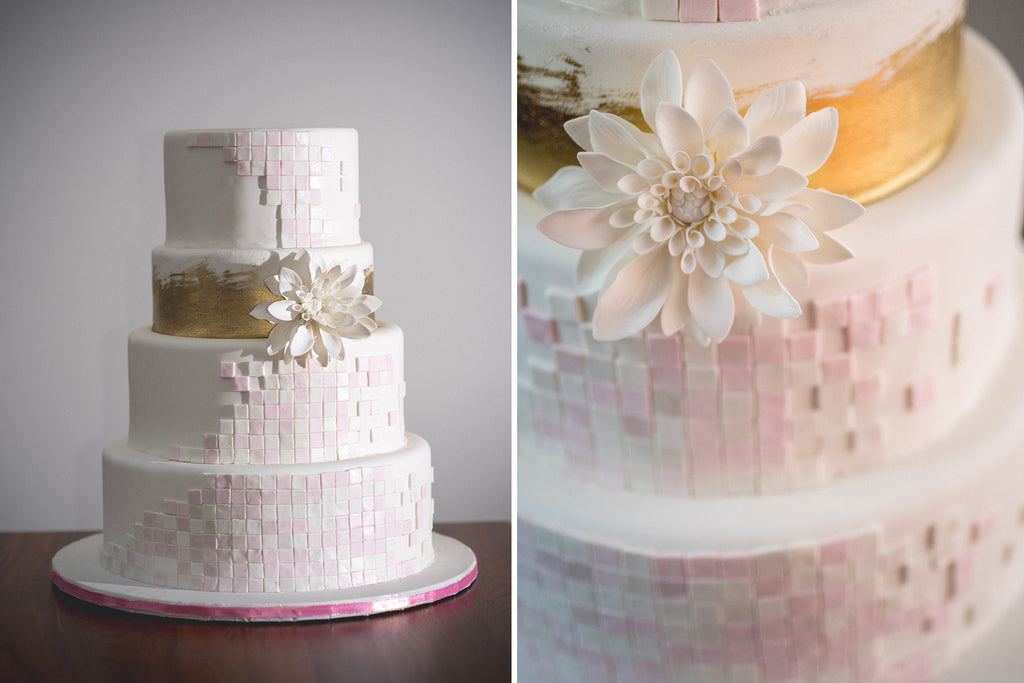
I recently made this tiled cake, and using that piece as a backdrop I'd love to share my process for creating a simple cake design with you. While I am focusing on the design process here, and not the mechanics for creating this cake, I have to note that my Sugar Shapers were instrumental in making this cake. I used them for cleaning up edges around my tiles, and also for filling in the gaps between tiers (this is called "gunging" and Kaysie Lackey has a great video on it which I found super helpful!)
Cake design is truly personal, but hopefully my process will be useful to you as you come up with your own approach and clean designs.
- Limited colors. Creating and complementing colors is a wonderful part of cake decorating. However, just like a painter doesn’t use every color in every single painting, cakes with just a few colors can be gorgeous - a white cake with all white flowers never goes out of style. For my work, I used white tiles, soft pink tiles, and gold - that’s it. I considered an ombré effect because I am apparently obsessed with making things complex. However, multiple shades could have felt busy, so I resisted, and I’m glad I did.
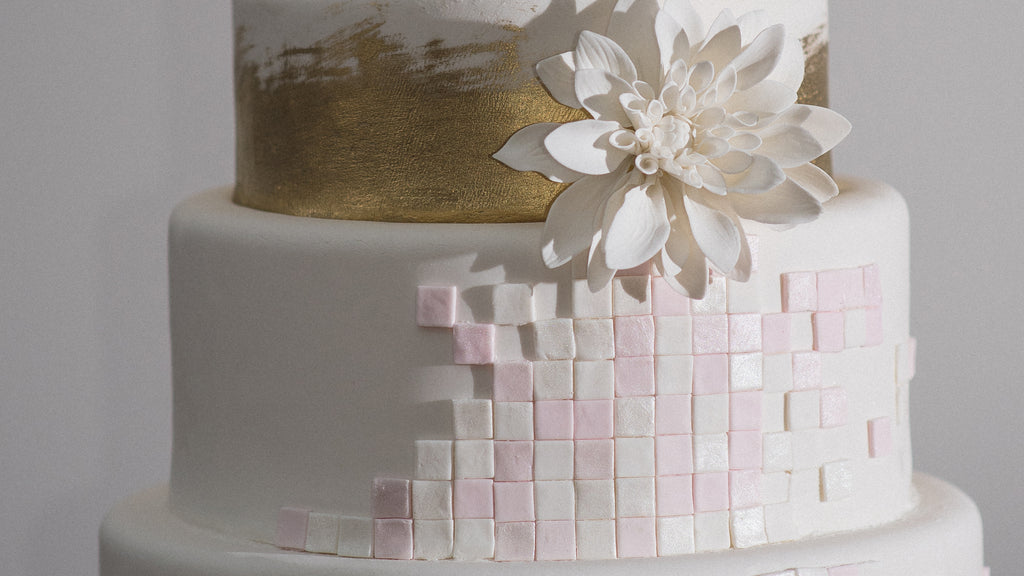
- Embrace the space. If you’ve ever been in a room with too much furniture it makes the walls feel like they’re closing in. I hate that. One of the hardest things for me to learn was that empty space on a cake is not necessarily unfinished - it can often add a great deal to the overall design. Just like interior design, with cakes sometimes less is more. For this cake half of the bottom tier is undecorated, with more blank space as the tiers go up. I wanted a cake that was not busy or distracting, and this space is crucial.
- Limited elements. Don't try to cram every technique into a single work. No one wants to listen to a song where all of the notes are being played constantly - we like music when notes and rhythms are arranged in ways that are pleasing, and cakes are no different. For my tiled cake, I used three elements. The tiles, uniform in shape, represent the first element; these are combined with a gold-brushed tier, element number two, and topped by a single dahlia (many thanks to Innovative Sugarworks for making this great Dahlia cutter set, and the awesome video on how to use it!) I felt an urge to make the design more complex with a spray of flowers...I told you I have a problem. I decided not to, though, because it felt finished without it.
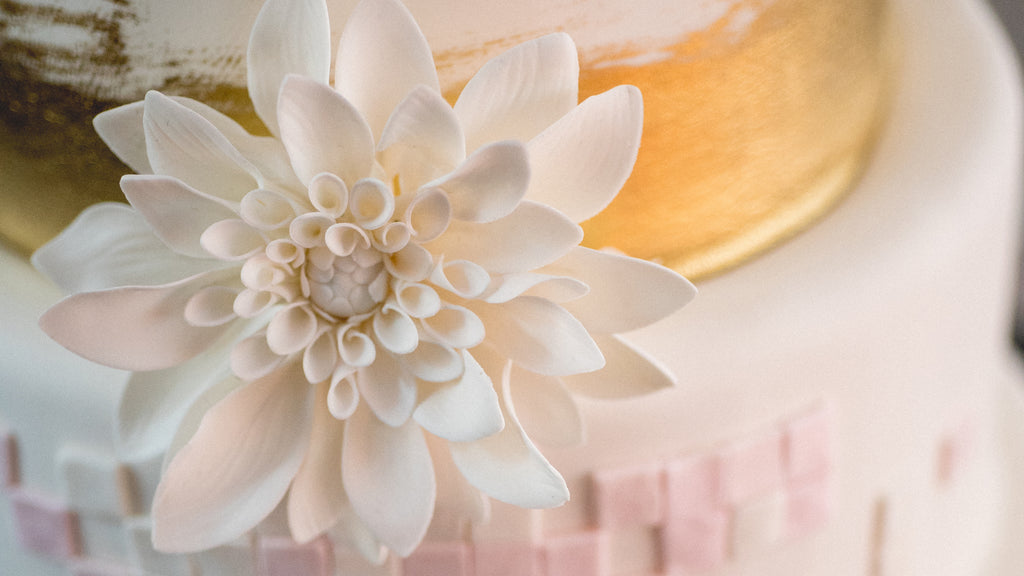
- Gentle movement. Cakes invite the eye on a journey. Think about a cascade of sugar flowers spiraling around multiple tiers - the eye naturally follows the cascade, taking in the sights along the way. For this design I arranged the tiles in a soft arc curving right and then back to the left. The dahlia sits in the non-tiled space and keeps the eye moving along. Aim for gentle, relaxed movements, like ice skaters (the parts where they are gliding and twirling ethereally; not the movements they make when they attempt a jump and fall to the ice.)
None of these are hard and fast rules. A cake with numerous colors can feel quite simple if the design leaves most of the space on the cake undecorated, just as a cake with no blank space could feel elegant with a simple design repeated on every tier. While I will probably always struggle with being a complexaholic, the projects I've been most satisfied with are those that are clean and timeless.
I'd love to hear your thoughts - learning from each other is one of the most fun parts of this field! Feel free to email me at bradandbuttercream@gmail.com or connect with me on Instagram: @bradandbuttercream .
We're super impressed with Brad's discussion of design and aesthetic! It's so easy to be so excited about all the new techniques you've learned that you want to cram them all into your next cake, but elegance is often achieved through subtlety and simplicity. We hope you found this as helpful as we did!
We also like to give a little shout-out to photographer Rob Yaskovic who photographed Brad's bio pic and his stunning tiled dahlia cake. Check out some more of Rob's work on his website, www.yaskovic.com.
Products
View all
